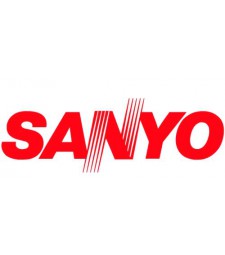
SANYO Mobile Phone Manuals PDF


Sanyo Mobile Phone Brand History
Some SANYO Mobile Phone User Manuals PDF above the page.
The company Sanyo was founded in 1950. Within two years it released the first Japanese radio from plastic. In 1954 came the first washing machine vibration type in Japan. The name of the company meant in Japanese "three oceans", appealing to the founder's ambition to sell products around the world - across the Atlantic, Pacific and Indian oceans.
Technologically, Sanyo had a good "relationship" with Sony (Service Manuals page) : they supported the Betamax video format from the time of its invention until the mid-1980s (the most sold VCR in the UK in 1983 was the Sanyo VTC5000), VHS video format in the early 80s, and later pioneers in the implementation of a very successful Video8 format. However, relatively recently the company refused to support the format of Sony, Blu-ray, and instead turned their attention to HD DVD (Toshiba (Manuals PDF page)). Ultimately, this was an unfortunate step, as Blu-ray became more successful.
In the winter of 2005, the company patented the new Super Sharp technology. November 2006 was marked by large losses and staff reductions.
In the autumn of 2008, an agreement was reached between Sanyo and Panasonic (Service Manuals PDF page) about the alleged redemption, which was to make Sanyo a subsidiary of Panasonic. The official notice of the purchase could be read on the Sanyo website in December of the same year. The company became a subsidiary of Panasonic in 2009.
Semiconductor business was sold in 2010. In the summer, Panasonic also reached an agreement to acquire the remaining shares of Sanyo for $ 9.4 billion. In the spring of 2010, Panasonic announced its intention to simplify the Sanyo brand. At the same time, they added that they are going to continue to release those products that are still valuable to consumers. In the summer of 2013, 51% of the stake in the Chinese company Hefei Sanyo, the joint venture Sanyo and the governmental company Hefei (was established in 1994), was bought by the American manufacturer Whirlpool Corporation for more than $ 550 million.
In December 2009, the acquisition of a 50% stake in Sanyo by Panasonic ($ 4.5 billion) was completed. This made Sanyo a wholly owned subsidiary of Panasonic. In the summer of 2010 Panasonic announced the redemption of the remaining shares. Sanyo pays great attention to the socialization of its new employees and their acclimatization to the corporate culture. Beginners go through a five-month course, during which they eat together and use sleeping rooms specially allocated for this.
They learn all the basic requirements, and can also communicate with colleagues and superiors. The company is known as a manufacturer of cell phones. Their release began in North America. For example, one of the first such devices Sanyo was the model SCP-3000. It turned out to be a large candy bar weighing 184 grams, which could work for two and a half hours in a talk mode, and up to sixty hours in standby mode. It was equipped with a lithium-ion battery and supported the CDMA standard.
